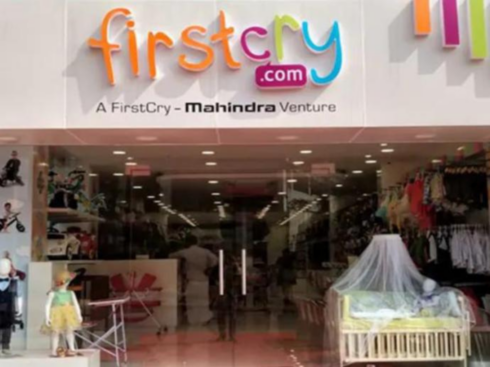
I’ve been grumpy for a few months, possibly for longer than that, about how everyone suddenly loves to talk about startups & valuations but very few people actually intend to deep dive and take a closer look. Indian media reporting on the startup ecosystem has officially been diagnosed with K-soap-masala syndrome while we have venture capitalists taking digs at successful Founders and comparing venture capital to term deposits. Yes, this truly happened.
It is rare to read a business publication today which is not overloaded with stories about tech startups. This is great, but since we all like to spice it up a bit too much, the media serves us exactly that. Stories are about how entrepreneurs secured VC and soared to wealth in a very short span of time or how they amassed excess capital before shutting doors. This has led other young entrepreneurs to think that VC route is the only model for success, that there is absolutely no other way to build a large company, and that they should write business plans, attend conferences, network with investors, and ultimately give VCs control of their venture. The sad outcome is that more founders ask “How can I get venture capital” rather than “Can I get venture capital,” “Should I get venture capital,” or the critical one, “Can I build my company without raising venture capital or by delaying it?”
The fact of the matter is hardly any of you will ever get venture financing for your company. Actually, most of you may never get to see the inside of a VC’s office. So, if you dream of building a large business, focus on the fundamentals and learn to build it without a VC. That’s what most of the successful founders did.
Unicorns or Donkeys?
Two big changes have happened which are widely known — in the past quarter, the value of some very high profile Indian companies such as Flipkart and Zomato have fallen substantially. Apart from these, many companies have raised down-rounds, consolidated or shut down which hasn’t been reported.
First things first, most founders and investors who’ve been in business for a long time foresaw this correction and have been talking about it privately for the better part of last year. Considering how valuations work, dependent on several parameters including completely external factors such as availability of capital, this was bound to happen. My point here is that everyone should stop caring about whether a company is a Unicorn or a Donkey.
Valuation of a company is just an unreal no. in the sense that no one has ever bought the company for that amount and neither the company is public. Instead, valuations are based on strangled maths, which directly extrapolates from investment rounds the company raises. The fact of the matter is so-called unicorn valuations are unsupported by conventional financial metrics (most of them are not profitable) or conventional asset valuations (most of them don’t own the assets they sell), how will we ever know if they are accurate or inaccurate for that matter?
Valuation is more of an art rather than science and focusing on it too much is only going to derail everyone. So fretting over valuations is never a good idea.
What happens inside the boardroom, stays inside the boardroom!
The lack of clarity on valuations doesn’t take away the fact that many startups wasted the excessive cash VCs dumped on them. I wrote about TinyOwl’s insane burn earlier and the herd mentality of VCs.

The tech fundraising philosophy has always been, “take as much money as possible from investors as early as possible.” This led to a culture of soaring investment rounds and towering valuations which put a premium on platonic “metrics” like “growth” instead of old-fashioned metrics like “profits”.
I’ve read and heard many marquee investors openly claiming that it’s OK to lose tons of money while building tech giants and there are always examples of public companies in the US reporting millions of $ in losses annually.
So, what’s been happening in the board rooms of all the heavily funded private companies over the last few years is that they say, “Did you see that? Did you see they went all out and they’re losing so much money and guess what they’re worth billions. What are we waiting for?”
The net outcome was that companies were jumping off the bridge, just because other companies were jumping too. If there is a competitor that’s growing to 5x sales and you just decide to wait for organic profitable growth and sit back, you lose considerable market share in a relatively short period of time. So, choosing not to play the game doesn’t work, and management is left to aggressively go out. In other words, companies raising massive amounts of venture financing have been coerced to set that money on fire as quickly as possible.
It takes true grit to build a strong dominant company when all of your competitors are giving away free shit sponsored by investors chasing winner-take-all returns mentality.
What next? Are all startups doomed suddenly?
In the short-term, the current macro-economic conditions will accelerate the demise of startups with poor revenue models that solely relied on investor euphoria and the tech industry’s momentum to achieve inflated valuations. And it is already making it more difficult for tons of startups to acquire the runway necessary to test and prove their pivots.
But this trend isn’t bad news for everyone.

For investors that resisted the temptation to follow the herd towards trendy, GMV laced opportunities and maintained a disciplined investment ethos, this new market uncertainty is less of a concern.
For startups that were fundamentally constructed to survive in lean and rich times, I don’t expect much to change. For instance, a startup with sound unit economics and revenue model might simply cut down investment in product development or marketing, add more revenue channels and work leaner to improve margins. Profitability, after all, has a funny way of limiting the need for outside capital.
What do you disagree with? What do you agree with? What did I miss? Let me know.
[First published on Linkedin by Bharat Sethi, founder, PosterGully.]


























